Global Lens Reflections on life, the universe, and everything
2017 – A year in Pictures
A real blog is supposed to have regular installments, but the last year was so busy that all I could do was try to keep up with my day job, which is feeding images and words to demanding editors around the globe. They are fortunately a forgiving lot, otherwise they would have sent me packing years ago. This blog, however, has no cruel captain ready to make me walk the plank if I fail to post every month, so I let it slide, repeatedly, missing opportunities to offer witty and timely comments about the world we share. As a sign of my contrition, what follows is a belated attempt to recall a year in which, although the world slid closer to destruction, countless people of good will risked their lives to carve out space for justice and compassion, or, failing that, simply a space to live without fear. I’m thankful to them for letting me close enough to capture some of their struggles. I’m thankful to people like Zano Begum, this young Rohingya woman I met in her makeshift shelter in the Chakmarkul Refugee Camp near Cox’s Bazar, Bangladesh. She had arrived in the sprawling camp just a month earlier, fleeing horrible ethnic cleansing in Myanmar. Through a translator she told me her story and I photographed her and her family. Thank you, Zano, and so many others like you, for letting me into your lives for a few moments.
IRAQ
In January I spent a couple of weeks in Iraq, beginning in Baghdad but spending most of my time in the Kurdish north, documenting again the lives of people affected by the takeover of much of the region by the Islamic State group in 2014. The horrible stories abound, yet life goes on for survivors like Rahaf Saeed, 6, a Yazidi girl who was displaced by ISIS and today lives with her family outside Duhok. I met her family after photographing her father in a church-sponsored jobs-training program, and he invited me home to meet his family and share a couple of hours of conversation in a crowded temporary shelter.
I entered Mosul in a military convoy on January 27, and witnessed the military victoriously raise the Iraqi flag over the eastern part of the city, celebrating its liberation from ISIS even as gunfire still echoed through the ravaged city. In this image, two residents of Mosul celebrate the partial liberation of their city by taking a selfie in front of festooned army vehicles. Fierce fighting remained ahead as the army moved to retake the remainder of the city, but for this one day there was jubilee amidst the ruins.
Father Emanuel Youkhana accompanied me to Mosul, the first priest to enter the eastern part of the city after the Peshmerga and Iraqi forces had driven ISIS out. Here he walks through the rubble of a church that belonged to the Ancient Church of the East. According to neighbors we spoke with, ISIS used the building as a warehouse until the final weeks of their occupation, when they awarded the building to a contractor who began to demolish it in order to salvage the steel rebar in the walls. We also searched for several houses that had belonged to Christian families but had been transferred to others by ISIS commanders. Although the entire city is now liberated, Christians are unlikely to return soon due to concerns about their security in the Sunni community. And the Sunnis are on edge because many of their liberators were militant Shias, some flying the flag of the Popular Mobilization Units, an Iranian-backed sector of the military. Here’s an article I wrote about our visit to Mosul.
In the article I also discuss the role of the Nineveh Plain Protection Units, a Christian militia I had covered a year earlier. This time I found them on patrol the town of Qaraqosh, a Christian community that was occupied by ISIS in 2014 and liberated by the Iraqi army in late 2016. Residents have yet to return, citing continued insecurity, and so the militia members remain vigilant, patrolling the streets of the embattled city to make sure ISIS doesn’t return. It’s a land of shifting alliances, however, so eventually it may not be ISIS that draws their fire.
If you’re looking for a thrilling video of what it looks like to ride around Baghdad in the back of an armored vehicle, check out my cinematic thriller.
US – Mexico Border
In order to write a story for response, the magazine of United Methodist Women, about life along the U.S.-Mexico border, I spent a few days poking around communities along the Rio Grande River, hanging out with people like Patricia Esquivel and her daughter, Yarely Arellano, who here walk through the predawn darkness of the Mexican city of Juarez on their way to the border, where Arellano will cross into El Paso, Texas, to study at the Lydia Paterson Institute, a United Methodist-sponsored high school. Arellano makes the journey every school day, and most days her mother accompanies her to the border for safety. Arellano was born in the United States, and is thus a U.S. citizen, but her mother, a Mexican national, was later deported and is thus not allowed to reenter the U.S.
In the article I linked to above, I tried to show how the border is far from a static place, and where shifting policies and demographics make change a constant. When I visited Nuevo Laredo at the beginning of March, for example, hundreds of Cuban immigrants were stuck there as a result of a change in the U.S. government’s infamous wet-foot, dry-foot immigration policy. The Cubans weren’t allowed to enter the U.S. yet didn’t want to return to Cuba. Many of the city’s churches became temporary shelters for the immigrants, and congregations rotated responsibility for feeding the Cubans, who were literally forced to appreciate Mexican cuisine or go hungry. Here’s an image of Maria Natividad Granados, a Methodist woman in Nuevo Laredo as she and other members of her church serve food to Cuban immigrants in that city’s Plaza Benito Juarez. Such solidarity from ordinary Mexicans has been tested this past year, as not only were the Cubans stuck at the border, but the U.S. stepped up deportations of Mexican nationals, while at the same time detaining many undocumented workers from other nations and simply dumping them across the U.S.-Mexico border.
In this image, Edwin Chacon, an asylum seeker from Honduras, watches as TSA agent Norma Villegas and Border Patrol agent Rene Perez inspect his papers in the Valley International Airport in Harlingen, Texas. Chacon was transported to the airport by a United Methodist deaconess, Cindy Johnson, from the Posada Providencia in San Benito, where Chacon, 18, stayed for several days after being released by immigration authorities pending a judicial hearing on his asylum request. He was on his way to stay with a relative elsewhere in the United States. Sponsored by the Catholic Sisters of Divine Providence, the Posada Providencia provides a safe place for people in crisis from all over the world who are seeking legal refuge in the United States. Read about them in my border story.
South Sudan
In April I began a five-week visit to South Sudan, a country I have journeyed to repeatedly in the last decade. From the emotional high of independence in 2011 it has descended into a chaotic cauldron of overlapping conflicts. There’s the power struggle that came to a head in December 2013, quickly ripping the country along ethnic lines. But there were already places where it was easy to rip things apart, like perforated lines running across the country’s multi-cultural landscape. One has to do with cattle culture, where traditional cattle raids, a rite of passage for young men, have gone from little more than sport with a few bows and arrows to full-out warfare with automatic weapons. On this trip I spent several days in cattle country, shooting images such as this one in Jonglei State. I also got a closer feel for the level of tension there one night in Poktap, where I shot cattlekeepers celebrating a wedding with lots of dancing and more than occasional firing of automatic weapons into the air. Just after dusk, however, the firing took on a different tone and someone was murdered, apparently settlement of a months-old offense. As gunfire bursts punctured the night, I was ushered into an NGO compound and spent several hours on standby, sitting in a vehicle ready to drive away into the bush at night if the violence worsened. Finally I went to sleep in a tent, but fully dressed in case we needed to make a quick getaway. We didn’t, and morning came. The whole experience was a reminder of how cattle culture has become militarized not just in South Sudan but across sub-Saharan Africa.
I reported from several places around the country, including the city of Wau, where tens of thousands of people had taken refuge inside the city’s churches and the local United Nations base. In one Episcopal Church, I photographed families before dawn one morning as they lay on the ground. Two days later, they were forced out. Some of them went to the Catholic cathedral, where more than ten thousand displaced had also sought shelter. The second photo is of a family eating their meager ration inside the Catholic cathedral grounds.
South Sudan has become a poster child for displacement. Not only have almost 2 million South Sudanese fled the country as refugees, and another 2 million are internally displaced, but the country also hosts almost 200,000 refugees from elsewhere, mostly the Nuba Mountains and Blue Niles regions of Sudan, as well as the Democratic Republic of Congo. As fighting has shifted from one part of the country to another, some have been fortunate enough to return home. In northern Jonglei, I spent a day with a group of women returnees, listening to their stories and documenting their lives, such as here where they walk home from a community garden, singing and dancing their way along the top of a dike they built to control flooding.
In other places, conflict and drought have combined to generate hunger, leaving people eating wild leaves and fruits to survive. Part of what I documented was how a few strategically placed wells dug by church organizations provided just enough support for people to stay at home and wait it out, though what they’re waiting for isn’t always clear.
Some parts of the country had remained relatively immune to the conflict, yet events in 2015 provoked a flood of new displaced people, many fleeing across the border into Uganda, others clustering around churches in the illusive hope that they would there be safe. There they find people like Raquel Peralta, a Catholic nun from Paraguay. Here’s she’s hugging a girl in a camp for more than 5,000 displaced people in Riimenze, in South Sudan’s Gbudwe State. Families here were displaced at the beginning of 2017, and Peralta and other pastoral workers have remained by their side through awful violence. She’s a member of the Missionary Sisters Servants of the Holy Spirit, and works in South Sudan as part of Solidarity with South Sudan, an international network of Catholic groups. Raquel and other Catholic workers from around the globe remain a clear sign that the world has not forgotten South Sudan.
Uganda
After South Sudan, I flew with Mission Aviation Fellowship to the north of Uganda for a couple of days to document work in the sprawling Rhino Refugee Camp. As of May, the camp held almost 87,000 refugees from South Sudan, and more people were arriving daily. Because water pumps in the camp are solar-powered, water can only be obtained during daylight hours. Refugees will therefore line up their jerry cans overnight in order to be among the first to get water in the morning.
I produced a short video about life in the Rhino Camp, focusing on how the United Methodist Global Health Program was providing medical care and clean water.
Middle East
In remembrance of the 50th anniversary of the Israeli occupation of East Jerusalem, the West Bank and Gaza, I traveled to the middle east to produce portraits and short videos of 12 people–Jewish, Muslim and Christian–about why they still had hope for peace in the troubled region. It was an assignment for the World Council of Churches, which put together a campaign around the theme. 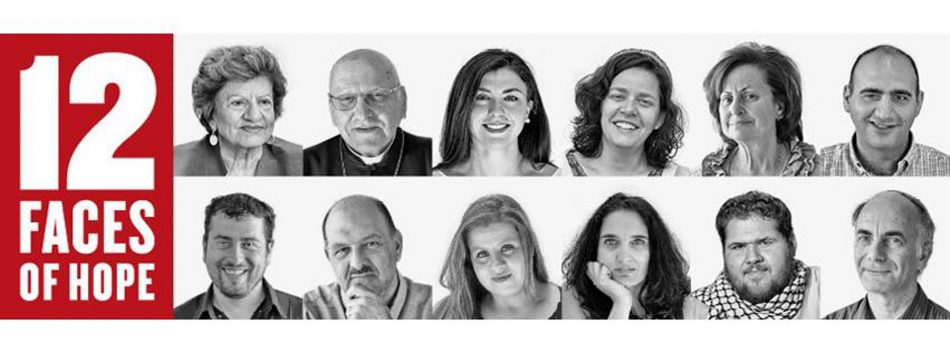
Malawi
After a couple of weeks at home, in June I was back on the road in Africa, this time focusing my lenses on maternal and newborn health issues in Malawi. In this image, Rhoda Nyoni, her son Moses on her back, waters a community vegetable garden in Kayeleka Banda. She’s pregnant, and a program of the Church of Central Africa Presbyterian works with her and other women in her village to insure that they and their children receive proper nutrition and health care.
The same program works with Mektie Nkuna, who’s pregnant with her second child and is here winnowing corn early in the morning in Chibamu Jere.
Refugees in the U.S.
I spent several days in July visiting refugee resettlement programs on the east coast of the U.S. In Durham, North Carolina, I photographed Evanis Gatunzi, a refugee from Rwanda, riding a bike for the first time. She’s helped by Greg Garneau (left), a volunteer who coordinates the refugee bike program for the Durham Bicycle Co-op, and Monique Lohmeyer, a case manager for Church World Service. In the background, Yosef Birhane, a refugee from Eritrea, cheers her on.
In Harrisonburg, Virginia, I captured Martin Mayiani, second from right, teaching a class on driving in a Presbyterian church. Mayiani is a former refugee who came to the U.S. four years ago. He volunteers to teach these newly arrived Congolese refugees how to pass the state’s driving test, which isn’t available in Swahili. They use toy cars to understand the nuances of how to drive in the U.S.
In Linville, Virginia, volunteers work with refugee children in a 4H program where they learn to raise and show goats and sheep.
And in this image, Mekiya Kebir and her children, recently arrived refugees from Eritrea, explore a book in their apartment in Lancaster, Pennsylvania. They got the book and other educational materials from Church World Service. Following that is an image of 5-year old Saliha Mussa, another recently arrived refugee from Eritrea, enjoying dinner in her family’s apartment in Lancaster.
Also in Lancaster, I accompanied a “cultural orientation class” where newly arrived refugees walked together on a downtown street, learning how to read street signs and practicing their English with passersby. At one point, the woman on the left shouted as she came out of her home and crossed the street, all the while clapping her hands and repeating, “Welcome to America!” It helped me understand that no one needs to make America great again, because it already is.
Milky Way
I got bored one night in August so I hiked up the northeast side of Mt Rainier to photograph the Milky Way, positioned at 2 am as if it were erupting from the summit. The small lights on the slope of the mountain are the headlamps of climbers. (High quality prints of this and a selection of other images are available for purchase.)
Alaska
I then spent part of August in Alaska, traveling from Nome to Homer, working on a story for United Methodist Women about several issues in Alaska today, from the historic trauma of Native peoples to the abuse of opioids. I couldn’t resist a few photos of scenic Alaska, like this of the Russian Orthodox Church at Nilnilchik.
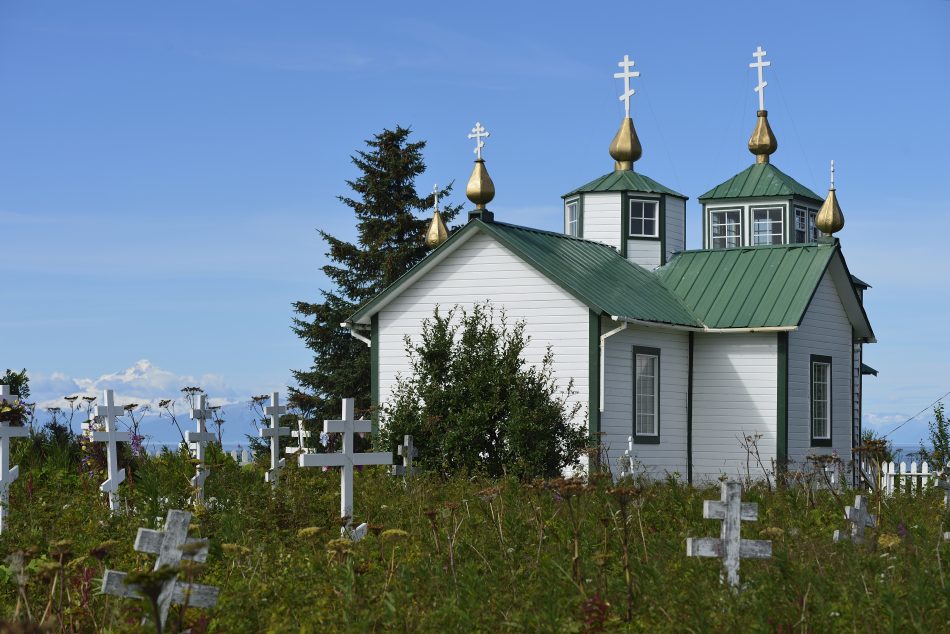
Haiti
In September I spent a week in Haiti capturing some images in preparation for the first anniversary of Hurricane Matthew. I focused on how church agencies had helped people rebuild in the aftermath of the devastating storm. People like Eliciore Volbrun, who here prepares tea by candlelight before dawn in her family’s new home in Djondgon, a village near Jean-Rabel in northwestern Haiti. The family’s previous house was destroyed by Hurricane Matthew in 2016. (Special thanks to the CWS crew willing to get up early to get me out into this village in the dark.)
Here a boy plays hopscotch in the Haitian community of Ganthier, where an ecumenical aid agency from the neighboring Dominican Republic has built hundreds of homes and helped kickstart the local economy in the year after Matthew.
And here’s an image of Marcilien Georges as he pulls in a fish in a small fishing boat off the coast of northwestern Haiti near the village of Plateforme. Derlien Hendy is rowing. The village was ravaged in the storm, and an ecumenical aid group helped the community rebuild its economy with fishing materials, a solar-powered refrigerator room for storing their catch, and other assistance.
Myanmar
In October I spent several days in Myanmar, part of it at a regional conference on mission, then working on a story setting the stage for the upcoming visit of Pope Francis, then a few days around Kalay in the north, where among other things I documented a workshop on women’s empowerment conducted by a regional missionary for United Methodist Women (the article will be out in a few months).
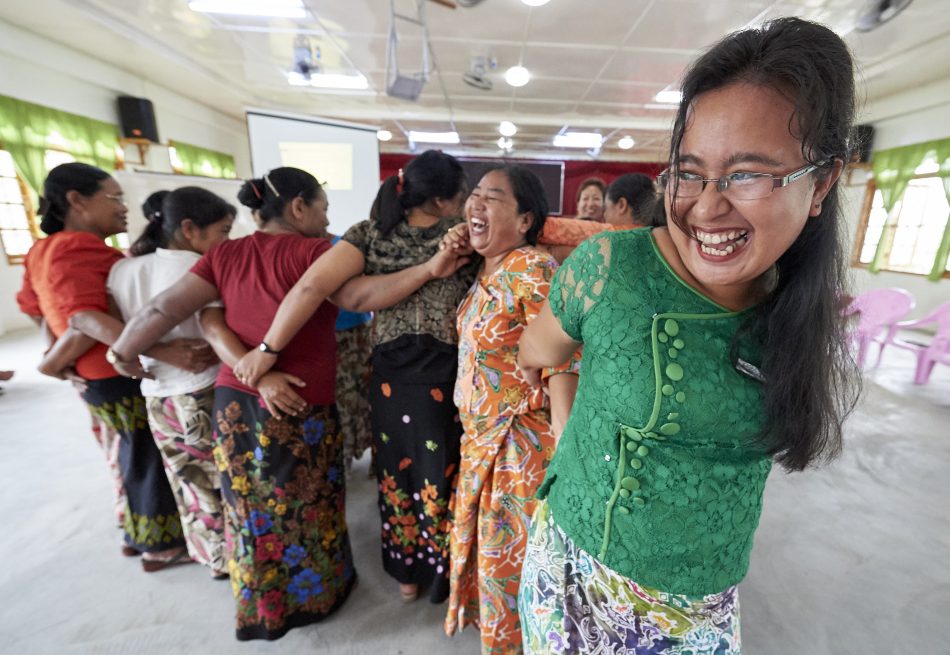
I also just took time to photograph and interview ethnic Chin women in that part of the country.
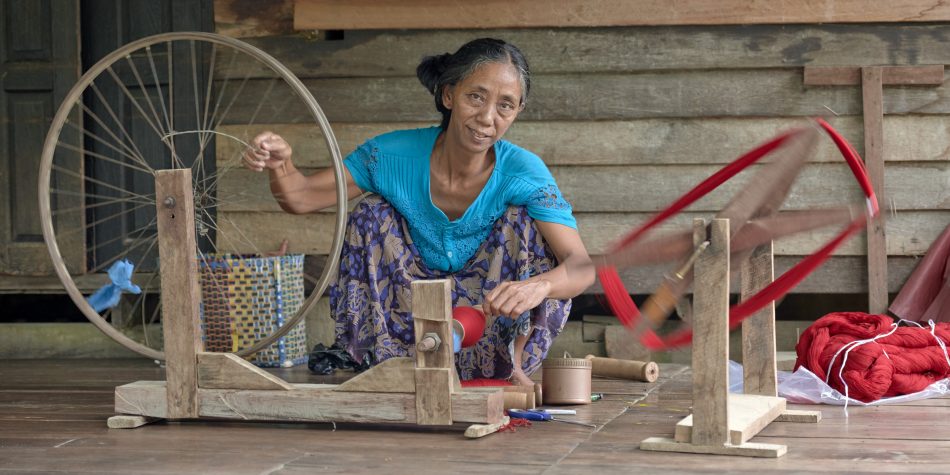
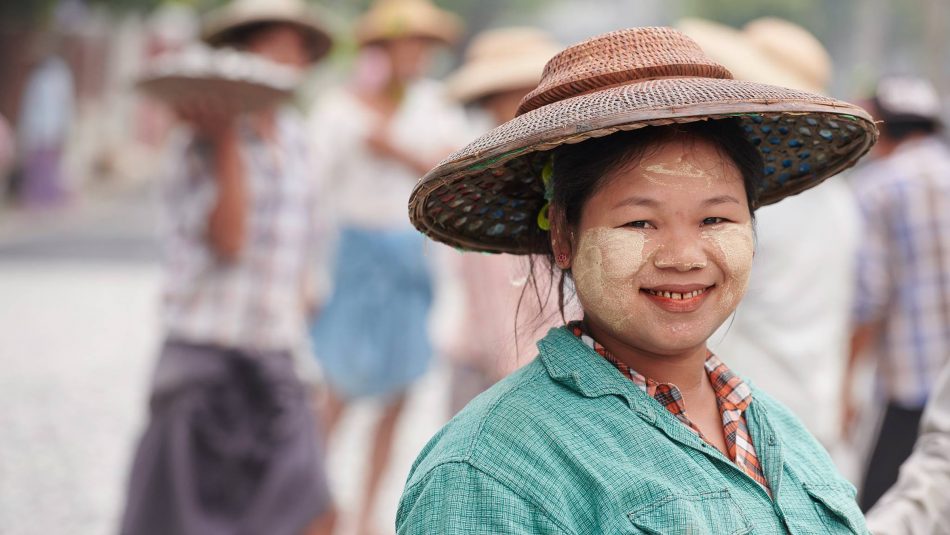
Bangladesh
It was then on to Bangladesh, where I traveled to the north of the country to document work being done in communities that had experienced severe flooding from monsoon rains in August. With help from aid agencies, people were working together to make their villages along the Brahmaputra River less vulnerable. People like Komela Khatun, who in order to raise her home a few inches, spent days carrying dirt in a basket in West Fasura, a village on an island in the middle of the Brahmaputra. The flooding had destroyed everyone’s crops on the island, but a Bangladeshi aid group provided emergency cash grants to vulnerable island families so they could reestablish their household economies and restart their lives.
Same with Hasina Begom, here planting rice in Kunderpara, another island village
And her neighbor Jabeda Begum, who here stands in her rice field where severe flooding eroded the bank, washing away part of her farm.
And these kids who, ah, are more concerned about the game.
I then flew to Cox’s Bazar in the south of the country, an area that’s become ground zero for the humanitarian response to more than 600,000 Rohingya refugees who’ve fled ethnic cleansing at home for relative safety in crowded makeshift camps.
Many Rohingya fled their homes with little notice as the Burmese military and mobs of Buddhist extremists attacked their villages. Their journeys to Bangladesh were long and arduous, and conditions in the camps are difficult. Here a Rohingya woman feeds her child in a United Nations clinic for severely malnourished children in the Balukhali Refugee Camp. She is using Plumpy’nut, a peanut-based supplement given to malnourished children. The next image shows a newly arrived Rohingya woman waiting to be registered in the Kutupalong Camp, and then Rohingya women line up for food distributed by an ecumenical agency in the Chakmarkul Camp.
Given how the Myanmar government denies them citizenship, and the Bangladeshis, though they have displayed remarkable hospitality, nonetheless don’t want the Rohingya to stay in their already densely populated country, the Rohingya are effectively stateless. Yet several cultural elements, such as the use of thanaka on the faces of women and girls, belies their Burmese identity.
Given the intransigence of Yangon, the Rohingya aren’t going home any time soon, and there are several things that can go wrong as they remain in Bangladesh, as I outlined in this article. Yet as difficult as things may be, you can always count on children to make the best of it.
Korea
In December I went to South Korea to cover an ecumenical conference, and while there photographed a candlelight vigil calling for peace on the Korean Peninsula.
I also spent a day with some wonderful women in the Sunlit Sisters Center in Anjung-ri. It’s a gathering place, started by a Methodist woman, for women who worked as prostitutes around the U.S. military bases in Korea starting in the 1950s. Today many of them live in tiny unheated rooms within a stone’s throw of the largest US military base outside the United States. I’m doing an article on them for response, the magazine of United Methodist Women. They include this woman, pictured here in her one-room apartment that she shares with two stray dogs she adopted.
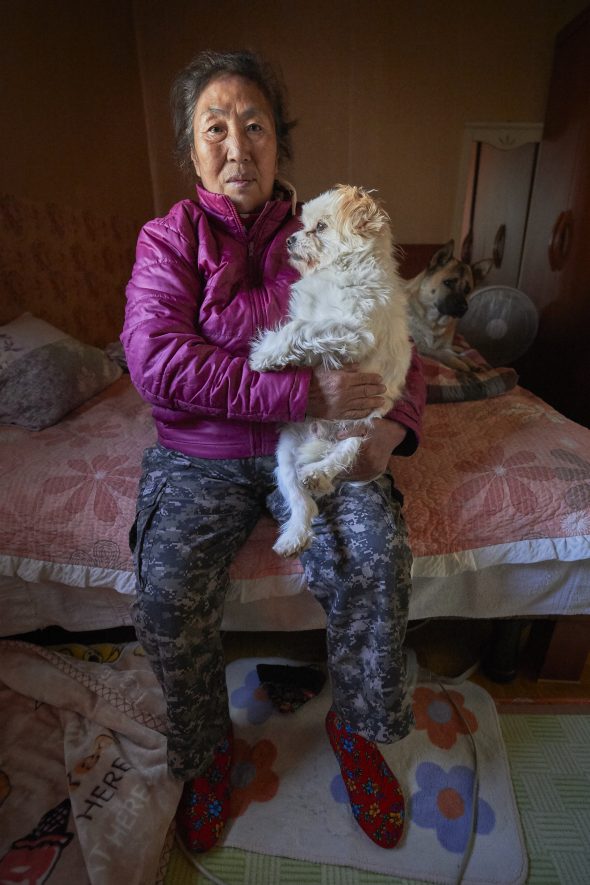
There’s another struggle in Korea and beyond about an earlier generation of the so-called “comfort women” forced into sex slavery by the Japanese military during World War II. Every Wednesday in Seoul there’s a demonstration around a statue of a comfort woman who sits permanently across the street from the Japanese embassy. It was cold when I was there in December, so her supporters had dressed her warmly.
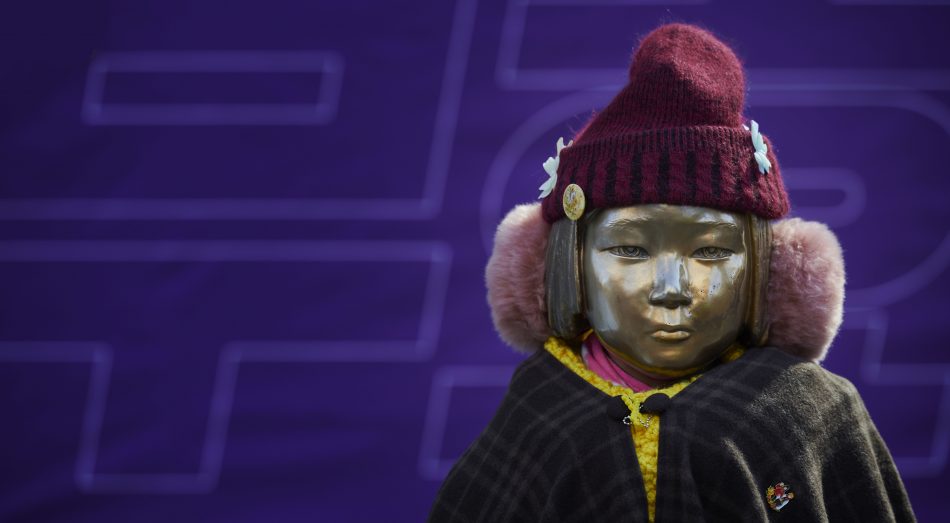








































5 Responses to 2017 – A year in Pictures